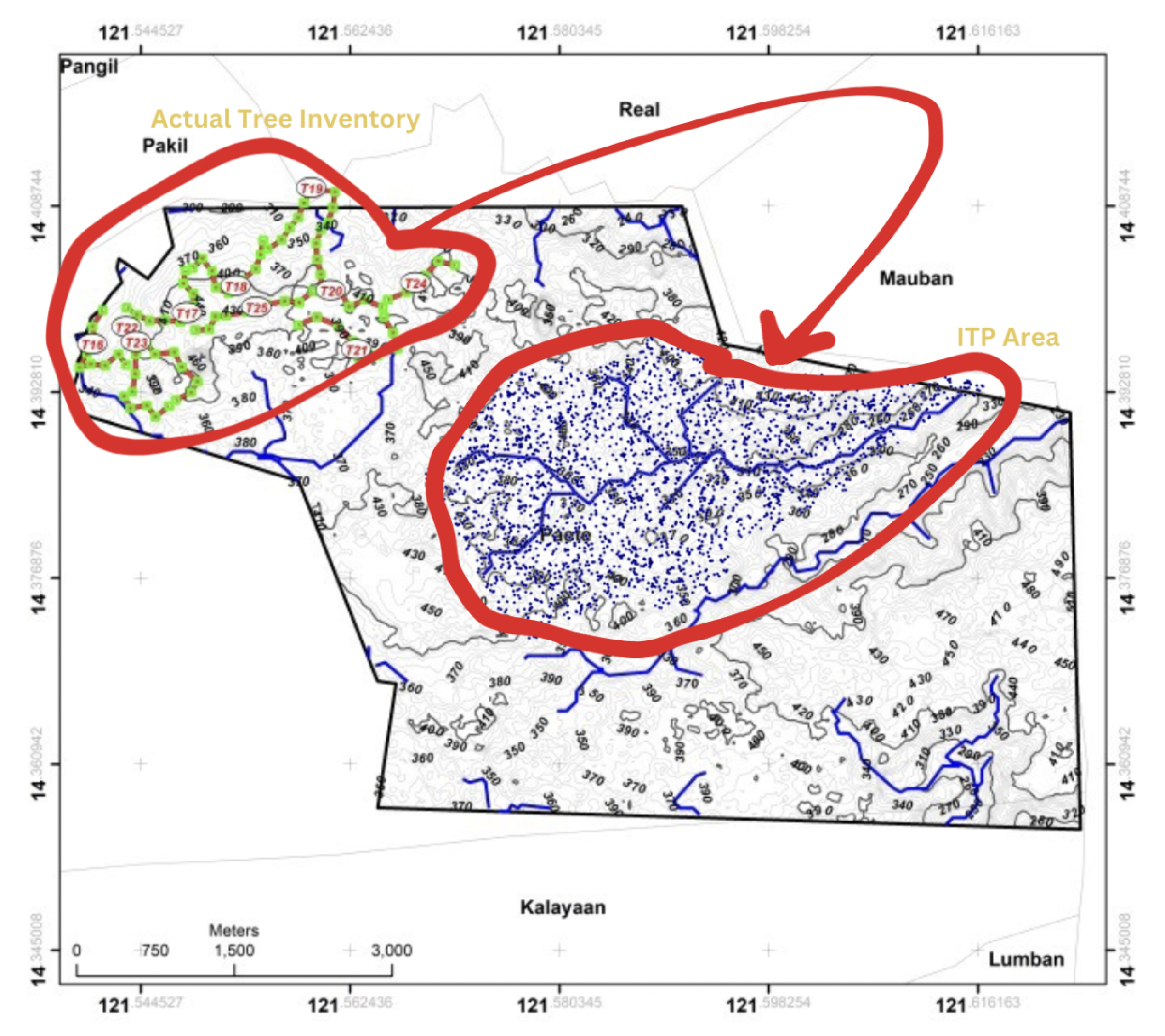-
Partager cette page
LUNTIAN: An Agent-Based Model of an Industrial Tree Plantation for Promoting Sustainable Harvesting in the Philippines
Coécrit par Mehdi Saqalli
Publié le 17 novembre 2025 – Mis à jour le 17 novembre 2025
The study shows that the LUNTIAN agent-based model effectively integrates ecological, economic, and social dynamics to evaluate sustainable management strategies for industrial tree plantations in the Philippines, demonstrating both profitability and improved forest regeneration.

Industrial tree plantations (ITPs) are increasingly recognized as a sustainable response to deforestation and the decline in native wood resources in the Philippines. This study presents LUNTIAN (Labor, UNiversity, Timber Investment, and Agent-based Nexus), an agent-based model that simulates an experimental ITP operation within a mountain forest managed by University of the Philippines Los Baños. The model integrates biophysical processes—such as tree growth, hydrology, and stand dynamics—with socio-economic components such as investment decision making based on risk preferences, employment allocation influenced by local labor availability, and informal harvesting behavior driven by job scarcity. These are complemented by institutional enforcement mechanisms such as forest patrolling, reflecting the complex interplay between financial incentives and rule compliance.
To assess the model’s validity, its outputs were compared to those of the 3PG forest growth model, with results demonstrating alignment in growth trends and spatial distributions, thereby supporting LUNTIAN’s potential to represent key ecological dynamics. Sensitivity analysis identified investor earnings share and community member count as significant factors influencing net earnings and management costs.
Parameter calibration using the Non-dominated Sorting Genetic Algorithm yielded an optimal configuration that ensured profitability for resource managers, investors, and community-hired laborers while minimizing unauthorized independent harvesting. Notably, even with continuous harvesting during a 17-year rotation, the final tree population increased by 55%. These findings illustrate the potential of LUNTIAN to support the exploration of sustainable ITP management strategies in the Philippines by offering a robust framework for analyzing complex social–ecological interactions.
To assess the model’s validity, its outputs were compared to those of the 3PG forest growth model, with results demonstrating alignment in growth trends and spatial distributions, thereby supporting LUNTIAN’s potential to represent key ecological dynamics. Sensitivity analysis identified investor earnings share and community member count as significant factors influencing net earnings and management costs.
Parameter calibration using the Non-dominated Sorting Genetic Algorithm yielded an optimal configuration that ensured profitability for resource managers, investors, and community-hired laborers while minimizing unauthorized independent harvesting. Notably, even with continuous harvesting during a 17-year rotation, the final tree population increased by 55%. These findings illustrate the potential of LUNTIAN to support the exploration of sustainable ITP management strategies in the Philippines by offering a robust framework for analyzing complex social–ecological interactions.





